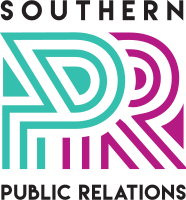So you’ve developed a successful business and got yourself a brand.
But as that business has evolved and grown, whether you’ve been going for two years or twenty, are you effectively communicating your brand story to your audience?
You might be thinking “why do I need to do that?”.
Because brand storytelling is pretty much the most important tool in your toolbox when it comes to telling the full story about your business – who you are, what you do and why people should care.
If you’re a start-up it can help shape your culture, and if you’ve been in business a while, your marketing team should use it to help attract long-term consumer engagement and drive buying behaviour.
3 brand storytelling top tips:
1. Know who you are
For starters you need to understand some branding basics, like the difference between a logo, a brand identity and a brand — all very different things, but equally important when maintaining a successful business.
Think about it in terms of YOU.
Your logo is your name, or nickname.
Your clothes, how you walk and talk – that’s your identity.
Your personality (how people talk about you) is your brand.
Once you’re sure you have your ‘brand-self’ down pat, think about how you’re going to convey your personality in such a way that your target market (your customers) buy into you and your brand.
2. Find your stories
If you want to share your brand story on the local, national or world stage, you need to:
- Be unique
- Be authentic
- Know and represent your values consistently
- Drive demand (in a subtle way)
Ask yourself what’s special and unique about your business. How do you craft your story and tailor it to different customers and target markets? Think about ways to tell a story around how your customers will benefit by using your product or having your experience.
That’s why Coke makes ads about family bonding and happiness rather than the taste of their drinks because they’re emotionally engaging their viewers.
Find your own ‘clean air’, a niche topic or line of conversation or advice no-one else owns, or a new angle on something no-one else has said.
In a nutshell, be more interesting. And more appealing.
3. Have a strategy
It’s all very well to have a business strategy that’s all about the dollars and cents, but what does your ‘creative’ plan look like?
When planning your strategy ask yourself what makes you authentic, unique and in demand?
Start by defining your story, core values and point of difference and use them as a foundation to build your strategy and key messages from the ground up.
Think about creating or finding your brand ambassadors — it may take time, but reaps huge rewards, simply because it’s someone else telling your story and advocating for your business rather than you giving your audience the hard sell.
Your creative strategy should work in tandem with any marketing or business development plans in terms of language, tone and timing.
Case Study: The Southern PR re-brand
Last year we ‘took stock’ of our own company and decided we needed a brand re-fresh that came with an injection of colour and creativity.
We’re a well-established, 24-year-old brand known throughout New Zealand, so we weren’t about to throw the baby out with the bath water.
After starting out with a brand that was strongly connected to the first two directors, a few years ago we stepped away from the ‘names on the door’ approach and re-branded as Southern PR.
Southern PR’s brand proudly reflects our place in the South Island, and in the Southern Hemisphere.
In 2017 we decided our brand needed a younger, fresher approach to talk to our target audience. We asked ourselves a range of questions to determine what we wanted, our target market, the purpose of our website, our social channels and our priorities and how our storytelling was going to change accordingly.
We love our new brand and so do our clients. We like nothing better than to ‘tell the stories’ of our people, our clients and our business success through a wider range of channels.
We do that in a much more visual way – through Instagram Stories, Pinterest, videos and the like, because that’s how people absorb content these days.
So if you’d like a download on how brand storytelling might help your business, don’t hesitate to get in touch.


